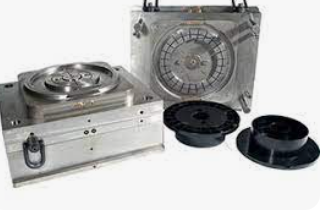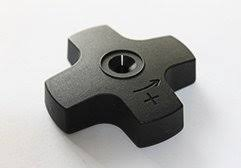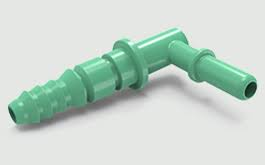Yes, Nylon 6 can be injection molded, offering high strength, durability, and heat resistance for diverse applications.

Introduction to Nylon 6
Nylon 6 is a synthetic polymer, known for its robustness and versatility in various applications. Developed in the 20th century, it has become integral in numerous industries due to its unique combination of properties.
Composition and Properties of Nylon 6
- Chemical Structure: Nylon 6 is a polyamide made from caprolactam. It features repeating units linked by amide bonds, contributing to its strength and thermal stability.
- Mechanical Properties: It is renowned for its high tensile strength, excellent abrasion resistance, and significant flexibility. These properties make it ideal for products subjected to wear and tear.
- Thermal Properties: Nylon 6 has a melting point around 220°C (428°F), which allows it to withstand high temperatures without losing its structural integrity.
- Electrical Properties: It also exhibits good insulation properties, making it suitable for electrical and electronic applications.
- Resistance: This polymer is resistant to many chemicals, including oils and solvents, but it is sensitive to strong acids and oxidizers.
Overview of Injection Molding Process
Injection molding is a versatile manufacturing process used for producing complex and intricate parts.
- Process Overview: It involves melting plastic granules and injecting the molten plastic into a mold under high pressure.
- Mold Design: The design of the mold is crucial and requires precision. It determines the shape, size, and surface texture of the final product.
- Cycle Time: The injection molding process is fast, with cycle times typically ranging from a few seconds to minutes, depending on the part’s complexity and size.
- Efficiency and Cost: It is a highly efficient process, especially for large-scale production, offering low per-unit costs and high production rates.
Advantages of Using Nylon 6 in Injection Molding
Nylon 6 stands out in injection molding for its remarkable attributes, which enhance the overall quality and efficiency of manufactured products.
Durability and Flexibility
- High Impact Resistance: Nylon 6 parts maintain their integrity under stress, making them ideal for high-impact applications. They resist cracking and breaking, ensuring longevity.
- Flexibility: Despite its strength, Nylon 6 remains flexible. This elasticity allows it to absorb impacts without permanent deformation, a crucial feature for components in dynamic environments.
- Wear and Tear Resilience: It exhibits excellent abrasion resistance, making it suitable for parts that undergo constant friction, such as gears and bearings.
Heat Resistance and Applications
- Superior Heat Resistance: Nylon 6 maintains its properties at elevated temperatures, with a melting point around 220°C. This resistance to heat makes it suitable for automotive and industrial applications where components might be exposed to high temperatures.
- Electrical and Electronic Uses: Its insulation properties make it a good choice for electrical connectors, circuit breakers, and other electronic components.
- Versatile Applications: Due to its heat resistance and strength, Nylon 6 is widely used in automotive parts, consumer goods, sports equipment, and even in the medical field for prosthetics and surgical devices.
Injection Molding Process for Nylon 6
The injection molding process for Nylon 6 involves specific steps and parameters to ensure the production of high-quality, durable parts. This process requires careful preparation of the material and precise control of various parameters.
Preparing Nylon 6 for Molding
- Drying the Pellets: Before molding, it’s crucial to dry Nylon 6 pellets to prevent moisture-related defects. Typically, drying occurs at 80°C for 6-8 hours.
- Ensuring Consistent Quality: Consistent pellet size and composition are vital for uniform melting and molding. Manufacturers often conduct quality checks on the pellets to ensure consistency.
Injection Molding Parameters and Conditions
- Temperature Control: The melting temperature for Nylon 6 usually ranges from 230°C to 260°C. Precise temperature control is essential for achieving optimal flow and filling of the mold.
- Mold Temperature: Setting the mold temperature between 80°C and 90°C helps in achieving a good surface finish and dimensional stability.
- Injection Speed and Pressure: High injection speed and pressure are necessary for filling complex molds. However, these parameters need balancing to avoid defects like flash or burn marks.
- Cooling Time: Adequate cooling time is crucial for the part to set properly. The time depends on the part’s thickness and the mold’s design.
- Cycle Time: The entire cycle, including injection, cooling, and ejection, typically ranges from 30 seconds to a few minutes, depending on the part’s size and complexity.

Comparative Analysis: Nylon 6 vs Other Plastics
In the world of injection molding, different plastics offer varying attributes. A comparative analysis of Nylon 6 and other common plastics highlights the unique aspects and suitability of each material for specific applications.
Performance Comparison in Injection Molding
- Strength and Durability: Nylon 6 generally surpasses most other plastics in terms of tensile strength and abrasion resistance, making it ideal for high-wear applications.
- Flexibility and Toughness: It also offers superior flexibility compared to more rigid plastics like polystyrene, enhancing its shock absorption capability.
- Heat Resistance: Nylon 6 has a higher melting point than many other plastics, like polypropylene, ensuring better performance in high-temperature environments.
- Moisture Absorption: One area where Nylon 6 differs significantly is its higher moisture absorption compared to plastics like PVC, which can affect dimensional stability.
- Chemical Resistance: Compared to plastics such as polyethylene, Nylon 6 offers better resistance to chemicals, oils, and solvents.
Cost-Benefit Analysis
- Material Costs: Nylon 6 is generally more expensive than common plastics like polypropylene and polyethylene. However, its superior properties often justify the higher cost.
- Processing Costs: The processing cost of Nylon 6 can be higher due to the need for drying the pellets and controlling the injection molding process precisely.
- Lifecycle and Durability: The long-term benefits of using Nylon 6, such as its durability and lower replacement frequency, can offset the initial higher costs.
- Application-Specific Value: In applications where strength, heat resistance, and durability are critical, the cost of Nylon 6 can be a valuable investment. In contrast, for less demanding applications, more cost-effective plastics might suffice.
Challenges and Solutions in Molding Nylon 6
Molding Nylon 6, like any manufacturing process, comes with its set of challenges. Understanding these challenges and implementing solutions is key to ensuring the quality and consistency of the final products.
Common Issues: Warping and Moisture Sensitivity
- Warping: This is a common issue where parts distort during cooling. It usually occurs due to uneven cooling or internal stresses.
- Solution: To prevent warping, ensure uniform wall thickness in the design and optimize cooling systems in the mold. Gradual cooling can also help reduce stress.
- Moisture Sensitivity: Nylon 6 absorbs moisture, which can lead to defects like splay marks or hydrolytic degradation during molding.
- Solution: Properly drying Nylon 6 pellets before use is crucial. Maintaining a controlled environment with low humidity during storage and processing can significantly mitigate this issue.
Best Practices for Effective Molding
- Mold Design Optimization: Design molds with uniform wall thickness and adequate cooling channels. This helps in even cooling and reduces defects.
- Control Molding Parameters: Precisely control the molding parameters like temperature, pressure, and injection speed. This ensures consistent quality and reduces the chances of defects.
- Regular Maintenance: Keep the injection molding machines and molds in top condition. Regular maintenance can prevent many issues related to machinery and tooling.
- Quality Control: Implement stringent quality control measures. Regular checks during the production process can help identify and rectify issues early on.
- Employee Training: Ensure that the staff operating the machines are well-trained and aware of the peculiarities of working with Nylon 6.

Case Studies: Successful Applications of Molded Nylon 6
The versatility and robustness of Nylon 6 have made it a material of choice in various industries. Two notable areas where its application has been particularly successful are the automotive industry and the realm of consumer goods and electronics.
Automotive Industry
- Under-the-Hood Components: Nylon 6 is extensively used for components like radiator end tanks and air intake manifolds due to its heat resistance and durability. These parts benefit from Nylon 6’s ability to withstand high temperatures and corrosive automotive fluids.
- Interior Applications: It finds applications in car interiors as well, for parts like seat adjusters and various mounts, where its strength and wear resistance ensure longevity and safety.
- Cost Efficiency: Using Nylon 6 in automotive components often results in cost savings due to its lower weight compared to metals, leading to improved fuel efficiency and reduced overall vehicle weight.
Consumer Goods and Electronics
- Household Appliances: In consumer goods, Nylon 6 is a popular choice for components in appliances such as blenders and vacuum cleaners, where its durability and resistance to wear and tear are essential.
- Electronics: For electronic devices, Nylon 6 is used in connectors, switches, and casings. Its electrical insulation properties, combined with its physical strength, make it ideal for these applications.
- Aesthetic and Functional Versatility: Its ability to be colored and molded into complex shapes allows for both aesthetic appeal and functional design in consumer products, making it a highly versatile material choice.




